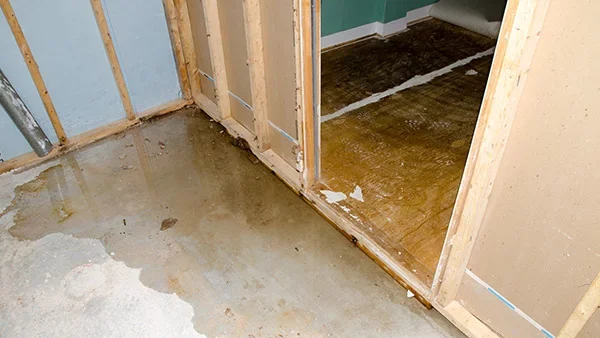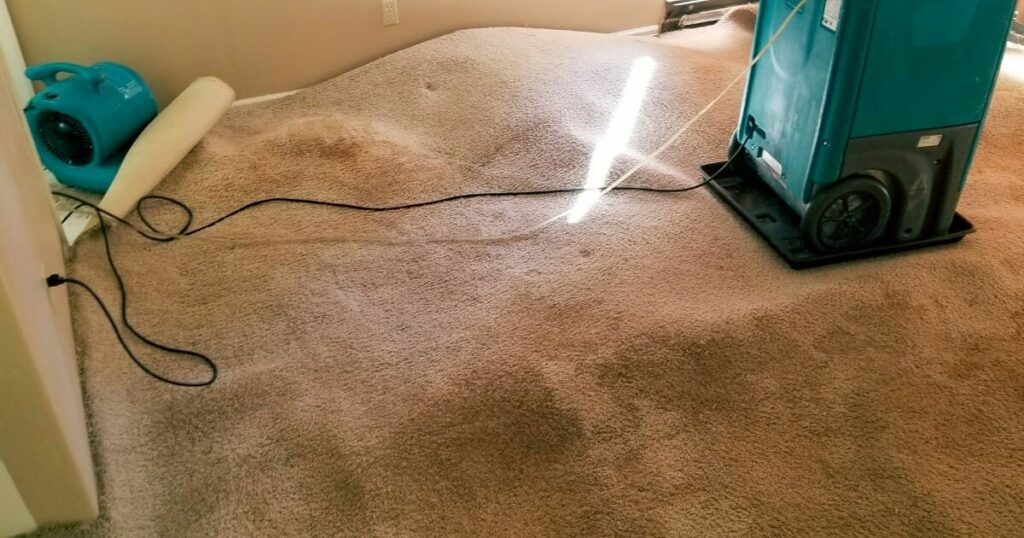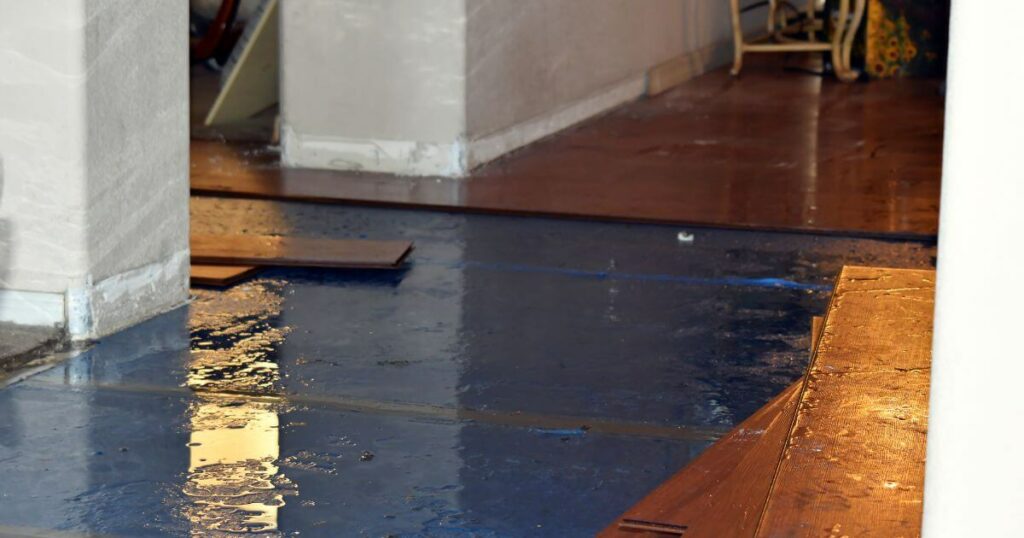Cleanup Guide to a Flooded Basement
Water damage in your basement can be a homeowner’s worst nightmare. Whether caused by heavy rainfall, a burst pipe, or a malfunctioning appliance, standing water in your basement can lead to extensive damage, mold growth, and structural issues if not addressed promptly and properly. At Doctor Fix-It, we specialize in professional water extraction in Riverside, New Jersey, ensuring that your basement is thoroughly dried and restored.
In this comprehensive guide, we’ll explore the most effective techniques for basement water extraction, including essential equipment, proper drying methods, and when to call in the professionals. By following these steps and tips, you can minimize damage, prevent mold growth, and restore your basement to its pre-damage condition. Trust Doctor Fix-It for reliable and efficient water damage restoration services that protect your home and peace of mind.
Assessing the Damage and Finding the Source
Different types of water damage
Before diving into water extraction techniques, it’s crucial to assess the extent of the damage and identify the type of water you’re dealing with. There are three main categories of water damage:
- Clean water: Originating from a clean source like a broken pipe or overflowing sink, this type of water is not harmful to human health.
- Gray water: Slightly contaminated water from sources such as washing machines or dishwashers, which may contain chemicals or bacteria.
- Black water: Highly contaminated water from sewage backups, flooding, or standing water that has begun to support microbial growth.
Common sources of basement water intrusion
To effectively address water damage, you must locate the source of the intrusion. Common sources include:
- Foundation cracks: Cracks in your basement walls or floor can allow water to seep in during heavy rainfall or when the ground is saturated.
- Poor drainage: Clogged gutters, downspouts, or a lack of proper grading around your foundation can cause water to pool near your basement walls.
- Plumbing leaks: Burst pipes, leaking appliances, or faulty water heaters can quickly flood your basement.
- Sewer backups: A clogged or overflowing sewer line can force contaminated water into your basement through drains or toilets.
Once you’ve identified the source of the water intrusion, take steps to stop the flow of water if possible, such as turning off the main water supply or unclogging drains.

Essential Equipment for Water Extraction
Features and benefits of wet/dry vacuums
Wet/dry vacuums are versatile tools that can handle both liquid and solid debris. When choosing a wet/dry vacuum for basement water extraction, look for the following features:
- High-capacity tank: A larger tank will allow you to remove more water without frequent emptying.
- Powerful motor: A strong motor will provide better suction and faster water removal.
- Durable hose: A high-quality, reinforced hose will resist kinking and withstand the demands of water extraction.
Submersible pump types and applications
For deeper water or larger areas, a submersible pump is an efficient choice. There are two main types of submersible pumps:
- Primary pumps: Designed for continuous use, these pumps are ideal for removing large volumes of water quickly.
- Utility pumps: More portable and lightweight, utility pumps are perfect for smaller jobs or tight spaces.
When selecting a submersible pump, consider the pump’s flow rate, head pressure, and power source to ensure it meets your needs.
Choosing the right dehumidifier and fan
After water extraction, drying out your basement is essential to prevent mold growth and further damage. Dehumidifiers and fans are crucial tools in this process. When choosing a dehumidifier, consider the following factors:
- Capacity: Select a dehumidifier with a capacity appropriate for your basement’s size and moisture level.
- Energy efficiency: Look for Energy Star-rated models to save on operating costs.
- Automatic shut-off: A dehumidifier with an automatic shut-off feature will prevent overflow when the tank is full.
High-volume fans, such as air movers or blowers, can help circulate air and speed up the drying process. Choose fans with multiple speed settings and durable construction for the best results.
Step-by-Step Water Extraction Process
Safety gear and precautions
Before beginning the water extraction process, ensure you have the proper safety gear:
- Rubber gloves: Protect your hands from contaminants and chemicals.
- Boots: Wear rubber boots with good traction to avoid slips and falls.
- Face mask: If mold or sewage is present, wear a face mask to prevent inhaling harmful particles.
- Safety glasses: Protect your eyes from splashes and debris.
Additionally, turn off the electricity in the affected area to avoid the risk of electrocution.
Setting up and using extraction equipment
- Position your wet/dry vacuum or submersible pump in the lowest part of the flooded area.
- If using a wet/dry vacuum, attach the appropriate nozzle or hose for water extraction.
- For submersible pumps, connect a discharge hose long enough to reach a suitable drainage point, such as a storm drain or outdoor area away from your foundation.
- Turn on the equipment and begin extracting water, moving the vacuum nozzle or pump as needed to remove water from all areas.
Monitoring the extraction process
As you extract water, keep an eye on the progress and watch for any signs of structural damage, such as:
- Cracks in walls or floors: Water pressure can cause existing cracks to widen or new ones to form.
- Bulging or sagging walls: Saturated drywall or insulation can cause walls to bulge or sag.
- Warped or buckling floors: Moisture can cause wood floors to warp or buckle, while tile or linoleum may loosen.
If you notice any of these signs, stop the extraction process and consult a professional to assess the damage and determine the best course of action.

Drying Techniques and Preventing Mold Growth
Drying techniques for different materials
After removing standing water, it’s essential to thoroughly dry out your basement to prevent mold growth and further damage. The drying process may vary depending on the materials involved:
- Drywall: If drywall has been saturated for less than 48 hours, it may be salvageable. Use fans and dehumidifiers to dry the walls, and consider drilling small holes near the base to allow for better air circulation.
- Carpeting: Remove wet carpeting and padding as soon as possible. If the carpet has been wet for less than 24 hours, it may be possible to clean and dry it. However, if sewage or contaminated water is involved, it’s best to discard the carpeting.
- Wood floors: Use fans and dehumidifiers to dry wood floors slowly and evenly to prevent warping. If floors are severely damaged, they may need to be replaced.
- Concrete: Although concrete is less susceptible to water damage, it can still retain moisture. Use fans and dehumidifiers to dry the surface, and consider using a floor squeegee to remove excess water.
Optimal dehumidifier and fan placement
To achieve the best drying results, place dehumidifiers and fans strategically:
- Position dehumidifiers in the center of the room or in areas with the highest moisture levels.
- Place fans at doorways and windows to help circulate air and promote evaporation.
- Direct fans toward wet walls or floors to speed up the drying process.
Monitor the drying progress using a moisture meter to ensure all materials return to their normal moisture levels.
Cleaning and disinfecting to prevent mold
Once your basement is dry, it’s crucial to clean and disinfect all surfaces to prevent mold growth. Follow these steps:
- Remove any remaining debris or damaged materials.
- Clean all surfaces with a mixture of warm water and detergent.
- Disinfect surfaces using a solution of 1 cup of bleach per gallon of water, or use a commercial disinfectant specifically designed for mold and mildew.
- Allow surfaces to dry completely.
When to Call Professional Water Extraction Services
Indicators of structural damage
While some water extraction tasks can be handled by homeowners, certain situations call for professional water damage restoration. If you notice any of the following signs of structural damage, contact a professional water extraction service immediately:
- Significant cracks in walls or foundations
- Sagging or collapsing ceilings
- Extensive warping or buckling of floors
- Visible mold growth
Advantages of professional water extraction
Professional water extraction services offer several benefits:
- Expertise: Professional technicians have the knowledge and experience to assess the damage accurately and develop an effective extraction and drying plan.
- Advanced equipment: Professionals have access to high-powered extraction equipment, industrial-strength dehumidifiers, and specialized drying tools to handle even the most severe water damage.
- Timesaving: With their expertise and equipment, professionals can complete the extraction and drying process more quickly than homeowners, minimizing the risk of further damage.
- Insurance assistance: Many water extraction companies can work directly with your insurance provider to streamline the claims process.
Emergency situations requiring immediate professional help
Some water damage situations require immediate professional attention:
- Sewage backup: Due to the health hazards associated with sewage, it’s essential to call a professional with the proper protective gear and cleaning equipment.
- Extensive flooding: If your basement has more than a few inches of standing water, professional extraction is necessary to remove the water quickly and safely.
- Electrical hazards: If water has come into contact with electrical outlets, wiring, or appliances, contact a professional to avoid the risk of electrocution.

Preventing Future Basement Water Issues
Gutter and downspout maintenance
Regular maintenance of your gutters and downspouts can help prevent basement water intrusion:
- Clean gutters and downspouts at least twice a year to remove debris and ensure proper water flow.
- Ensure downspouts extend at least 4 feet away from your foundation to divert water away from your basement.
- Consider installing gutter guards to minimize debris buildup and maintain clear gutters.
Sealing foundation cracks and gaps
Inspect your basement walls and floor regularly for cracks or gaps, and seal them promptly to prevent water intrusion:
- Use hydraulic cement or masonry caulk to fill small cracks and gaps.
- For larger cracks or structural issues, consult a professional to assess the damage and recommend the appropriate repair method.
- Apply a waterproof sealant to your basement walls and floor to provide an additional barrier against water intrusion.
Sump pump installation and maintenance
Installing a sump pump can help remove excess water from your basement and prevent flooding:
- Choose a sump pump with a capacity suitable for your basement’s size and water table level.
- Install the sump pump in the lowest part of your basement, typically in a sump pit.
- Regularly test your sump pump to ensure it’s working properly and perform any necessary maintenance or repairs.
- Consider installing a battery backup to keep your sump pump operating during power outages.
Understanding proper water removal techniques
Basement water extraction can be a daunting task, but by understanding the proper techniques, using the right equipment, and knowing when to call in the professionals, you can minimize damage and restore your basement to its pre-damage condition. Remember to prioritize safety, work efficiently, and take steps to prevent future water intrusion. If you’re ever unsure about the extent of the damage or the best course of action, don’t hesitate to contact a professional water extraction service for guidance and assistance.
Frequently Asked Questions
- How long does it take for mold to grow after water damage? Mold can begin to grow within 24-48 hours of water exposure, making prompt water extraction and drying crucial.
- Can I use bleach to kill mold in my basement? While bleach can kill surface mold, it may not penetrate porous materials like drywall or wood. It’s best to use a specialized mold remover or consult a professional for severe mold growth.
- Will my homeowner’s insurance cover basement water damage? Coverage for basement water damage varies by policy and the cause of the damage. Review your insurance policy and contact your provider for specific guidance.
- How long does it take to dry out a flooded basement? Drying time depends on the extent of the damage, the materials involved, and the drying methods used. It can take anywhere from a few days to several weeks.
- Can I stay in my home during the water extraction and drying process? If the water damage is limited to your basement and there are no electrical or structural hazards, you may be able to stay in your home. However, if the damage is extensive or there are health concerns, it may be necessary to temporarily relocate.
Basement Flooded? Call Doctor Fix It for Fast, Reliable Water Restoration
If you’re facing a basement water emergency or need professional guidance, contact Doctor Fix It for expert water extraction and restoration services. Our experienced team is ready to help you minimize damage and restore your basement quickly and efficiently. Don’t let water damage jeopardize your home’s safety and structural integrity—call Doctor Fix It today to learn more about our services and schedule a consultation.

